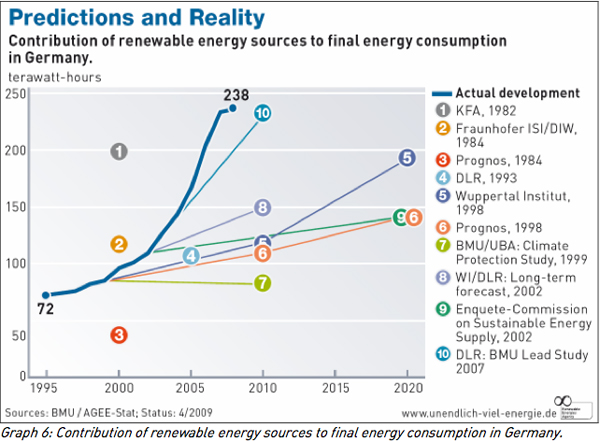"Partisans across the opinion spectrum are vulnerable to occasional bouts of ideologically induced insanity." -- Philip Tetlock
After the unpredicted fall of the Soviet Union in the late 1980s due primarily to an oil price shock, Philip Tetlock, a U.S. psychologist, started to question the wisdom of experts.
It seemed rather incredible to Tetlock that political commentators, including Soviet scholars, had uniformly failed to forecast the dissolution of the world's second mightiest empire. Tetlock wondered why and how they could be so blind and dumb?
So the psychologist assembled 234 experts, including government forecasters, university professors, "talking head" journalists, and economists.
All together the group made approximately 28,000 expert predictions about everything from economic growth to nuclear proliferation. Tetlock then compared the accuracy of the experts to dilettantes, dart-throwing chimps, and computer algorithms.
Sadly, the experts did only slightly better than the "proverbial dart-throwing chimpanzee," and a lot worse than mathematical equations predicting business as usual.
The findings astounded academia, but were ignored by the mass media. In fact, the modern news machine devotes a majority of its space to so-called economic and political experts who remain about as authoritative as a gaggle of unaccountable bonobos in an Irish pub.
However, Tetlock found two distinguishable groups of thinkers among the experts: hedgehogs and foxes.
The hedgehogs, which tend to dominate the airways, behaved in an authoritative manner and overconfidently relied on one source of information. In other words, they knew one thing well.
In contrast, the foxes, a humble lot rarely sought out by reporters, cautiously drew from a diversity of sources. Not surprisingly, the foxes produced more accurate judgments than the hedgehogs.
These findings taught Tetlock, the author of Expert Political Judgment, a few lessons about pundits. They "were hard pressed to do better than chance, were overconfident, and were reluctant to change their minds in response to new evidence. That combination doesn't exactly make for a flattering portrait of the punditocracy," he recently told Edge.org.
Tetlock also concluded that experts weren't really in the business of making accurate predictions, but served entrenched multi-billion dollar forecasting industries.
These paid prognosticators are "in the business of flattering the prejudices of their base audience and they're in the business of entertaining their base audience." Accuracy is about the last thing many an expert worries about these days.
Now, Tetlock's insights apply to energy analysts in barrels. Oil price predictors and forecasters get things so wrong that energy and business reporters have unwittingly become pipelines for misinformation as black as bitumen.
University of Manitoba scholar Vaclav Smil, a genuine energy fox, devoted an entire chapter in one of his many energy books (Energy At the Crossroads) to the phenomenon and called it "Against Forecasting."
(An historical aside: prior to the advent of cheap fossil fuels, energy forecasting really didn't exist: there were slave and animal audits as well as ship inventories, but no clique of energy forecasters.)
Too complex to predict
Given the grim historical record on modern energy forecasting, Smil refuses to engage in the game. In fact, Smil offers only one energy prediction: "We will spend more time and money on playing the future game" and most predictions will continue to be dead wrong.
Energy systems are so large and complex that unpredictable political events, economic disasters, disruptive technologies and public policy changes can quickly alter the course of events.
Alberta's bitumen industry, for example, grew like topsy on the lazy assumption that the continent couldn't say no to the world's most expensive and carbon intensive oil.
As a result, Alberta's pathetic growth forecasts of doubling or tripling oil production to five million barrels a day resolutely ignored popular resistance to the resource's carbon liabilities as well as a temporary upsurge in U.S. oil production from shale oil developments in Eagle Ford, Bakkan and the Permian fields. Consequently, the province's economic future now looks like a deflated balloon as it preaches pipeline mania.

Alberta's energy hedgehogs are not alone. Consider the Paris-based International Energy Agency (IEA). The resolute hedgehog has plied dubious global oil forecasts for years and its annual 2012 World Energy Outlook carries on the tradition.
The WEO report, as thick as a 1970s phone book, suggested that the United States would extract more oil than Saudi Arabia due to the shale gas and oil boom and even become a global energy net exporter by 2030. As a consequence, no one has to worry about peak oil or the end of cheap energy for the next 50 years, claims the IEA.
An expert friendly media then gushed predictable headlines proclaiming a new "Saudi America" as well as an era of "U.S. energy independence." (President Nixon promised the same in the 1970s, and his children still await its arrival.)
But when physicist and global energy fox Kjell Aleklett checked the real numbers, he found a different story than that presented by the IEA. For eight years now the testy Swede has criticized the agency for its unreliable forecasts. (In 2004 the agency predicted, for example that Saudi oil production would reach 22-million barrels by 2025 -- an overestimation that defied geology: now IEA forecasts that Saudi production will sit at 11-million barrels by 2025.)
EIA's attitude seems to be that "you should rely on us because we are telling you the truth, and governments around the world trust the IEA," once wrote the energy physicist.
Ugly geological truths
Although shale gas and shale oil production in North Dakota and Texas may add to U.S. reserves in the short run, both resources deplete rapidly, says Aleklett. And the IEA largely ignored that uncomfortable reality.
Nor can unconventional resources reverse some ugly geological truths: extreme hydrocarbons cost more money, burn more energy and take more time to develop. Even with the best of luck, U.S. oil production in 2020 (10 million barrels a day) won't surpass projected Saudi figures (10.8 million barrels a day).
So a temporary oil boom based on hydrocarbons as extreme as bitumen and shale gas won't turn America into a new Saudi Arabia or deliver energy independence. "We can conclude that it is unlikely that the future will follow any of the precise paths described in the IEA's scenarios," reported Aleklett.
"I frequently say that we have entered an era when physics is more important than economics. I'm a professor in physics (and global energy systems) and it is the laws of physics that are limiting to oil production in the future."
Calling the U.S. a new Saudi Arabia, added Aleklett, "can be regarded as a clever sales trick to generate interest in the WEO-2012 report."
Aleklett also deconstructed the agency's global outlook for oil production. IEA forecasters reported that, "In 2011, 12 billion barrels were discovered, equal to 40 per cent of the oil produced during the year." But given global consumption of 30 billion barrels a year this paltry addition, despite a five-fold increase in oil prices over the last decade, means that available resources are resolutely shrinking, adds Aleklett.

Moreover, conventional oil production will drop by 26 million barrels a day by 2035. According to the IEA, however, OPEC countries will make up the short fall from "undeveloped fields" while the rest will come from other places. "To expect that OPEC's giant fields will not be affected by large declines in production during the coming 25 years is completely unrealistic," says Aleklett.
"I find it very hard to understand how IEA can smile and say 'Don't worry, be happy'."
US energy misinformation agency
The U.S. Energy Information Administration (EIA), which makes regular forecasts on energy supply, demand and prices, hasn't fared much better on the accuracy front. In March 2012, the U.S. agency released an annual retrospective report that compares how well EIA's forecasts actually mirrored reality.
Not surprisingly, the EIA routinely missed the boat. To Deborah Rogers, a former investment banker and energy fox at Energy Policy Forum, the results were dismal if not eye-popping.
"For instance, EIA, by its own admission, states that they had overestimated crude oil production 62 per cent of the time; they had overestimated natural gas production 70.8 per cent of the time; and they had overestimated natural gas consumption 69.6 per cent of the time. Not the best track record by anyone's estimation, except perhaps EIA's."
The EIA also overestimated the energy intensity ratio (a measure of total energy consumption and GDP) "a whopping 96.5 per cent of the time."
Concluded Rogers: "In short, EIA is not very good at forecasting. But what is even more interesting is that Dr. Montgomery, the lead author of this new study, was once in charge of models and forecasts at EIA."
Renewable mistakes
The experts have also failed to come to terms with modest gains made in renewable sources of energy. In 2009, Germany's Renewable Energy Agency evaluated 50 energy forecasts made over the last couple of decades. Almost all underestimated the growth of renewables in Europe. In fact, solar, wind and biogas (made from corn or trees) reached predicted values "several years earlier than planned, and surpassed these by several hundred per cent."
Nor did anyone predict that Germany's success with renewable forms of energy would pose great environmental challenges.

German's top magazine, Der Spiegel, recently noted that the country's largest solar park sprung up in a bird sanctuary and that industry now wants to plant huge windmills in protected conservation areas.
Meanwhile, more than half of the trees felled in Germany find their way to the wood pellets and biofuel industry, threatening the status of the nation's ancient beech trees. Industrial corn monocultures have also industrialized farming communities in order to provide feedstock for the biogas industry.
In many respects failed energy forecasts remain an enduring long-term trend. In the 1970s, one well-known European prognosticator, Cesare Marchetti, declared that new energy sources would replace one another in a well-ordered transition "as though the system had a schedule, will and a clock."
Just as coal replaced wood, nuclear power, solar and natural gas would eventually displace oil, reasoned Marchetti. But 40 years later Marchetti's model has shown no real schedule.
Instead of nuclear and renewables replacing oil, the world has experienced a stable (although slightly declining) consumption of petroleum as well as steady consumption of coal and natural gas in fairly equal proportions.
Rules for those who would forecast
What Marchetti proved, however, was just how off base long range forecasts could be.
Nearly 30 years ago, the nuclear physicist Alvin Weinberg noted that the failure of energy forecasting taught two lessons: "We must try to formulate energy policies that finesse uncertainties and that are resilient to surprises."
But Tetlock's research combined with the sorry record of energy forecasters offers a few disquieting truths worth pondering.
1. First and foremost, regard all energy forecasts, whether boom or gloom, with radical skepticism. Recognize that many are paid for by dominant energy players in a world where fewer and fewer corporations now control energy flows the way 18th century slave traders once did.
2. Search out humble foxes. They draw their information from a diversity of sources and are accountable for their actions. They tend to be geologists and physicists and not economists.
3. Accept that our energy future will not only be uncertain but largely unpredictable. Unanticipated surprises will shock a highly complex system into unforeseen directions.
At the end of Future Babble, Dan Gardner's lively examination of failed expert predictions, the Ottawa-based journalist offers some sound advice from the late essayist Alistair Cooke.
"In the best of times our days are numbered anyway. And so it would be a crime against nature for any generation to take the world's crisis so solemnly that it put off enjoying those things for which we were designed in the first place. The opportunity to do good work, to fall in love, to enjoy friends, to hit a ball, and to bounce a baby."
And that may be the only reliable energy forecast available.
Next week, the Shale Gale: A bridge or a retirement party? ![]()
Read more: Energy, Environment


















Tyee Commenting Guidelines
Comments that violate guidelines risk being deleted, and violations may result in a temporary or permanent user ban. Maintain the spirit of good conversation to stay in the discussion.
*Please note The Tyee is not a forum for spreading misinformation about COVID-19, denying its existence or minimizing its risk to public health.
Do:
Do not: